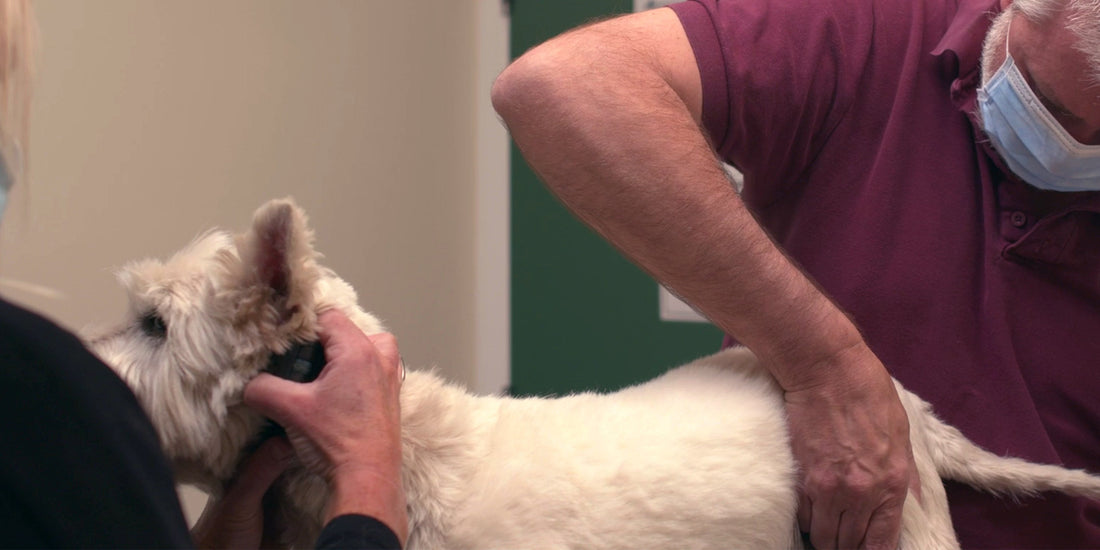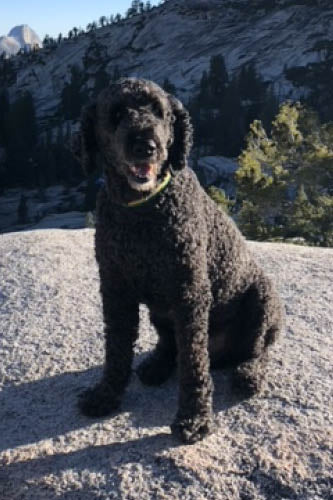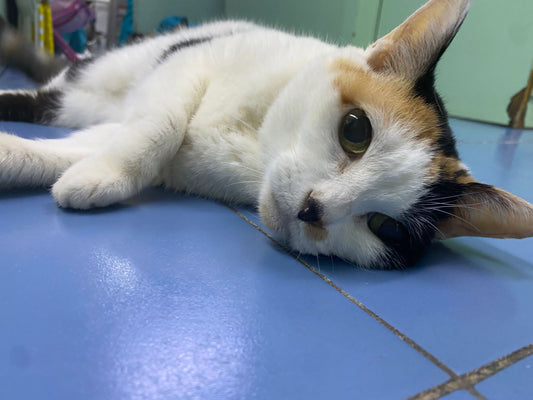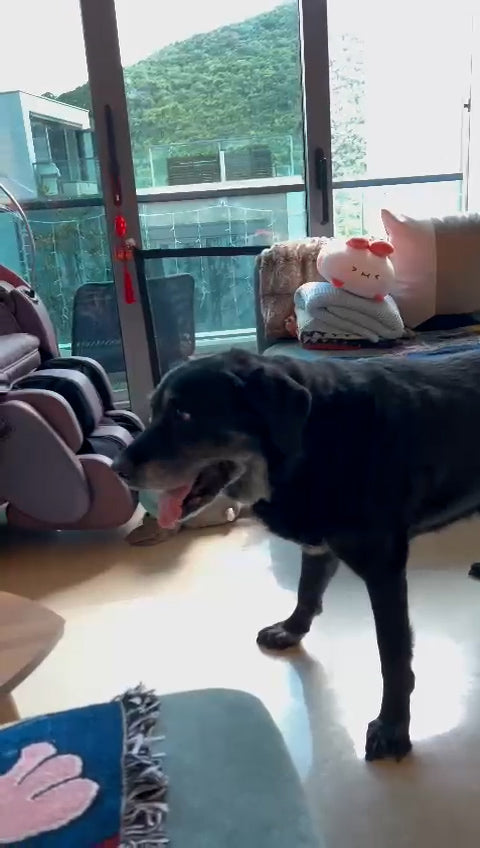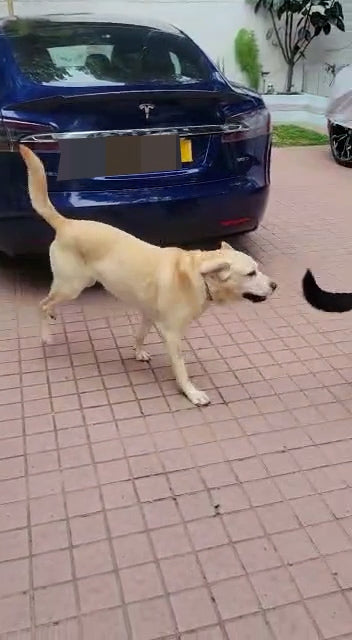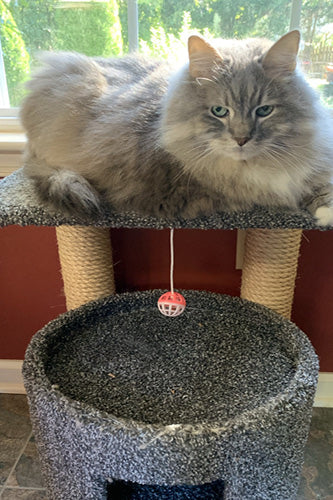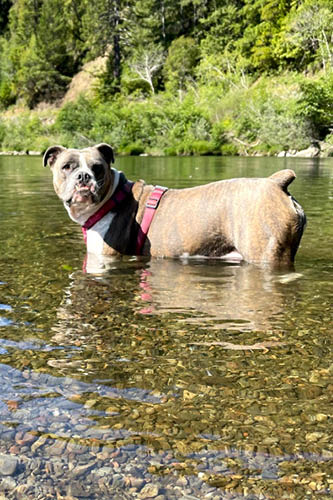Cranial or anterior cruciate ligament disease is one of the most common orthopedic conditions in dogs. The cruciate ligament is one of the stabilizers of the knee joint. The knee joint or stifle joint of the dog is a complicated joint. It is a hinge joint between the femur ( thigh bone) and the tibia ( shin bone). The joint is held together by several strong ligaments, including the medial and lateral collateral ligaments and cranial and caudal cruciate ligaments. The collateral ligaments prevent the knee from moving from side to side, and the cruciate ligaments prevent the tibia from sliding backward and forwards concerning the femur. If the cruciate ligament is damaged, the tibia will slide forward, causing pain and inflammation in the joints (synovitis). Over time this leads to joint discomfort and can result in permanent lameness.

What causes cruciate disease?
It was thought that all cruciate issues resulted from trauma; however, we now know that this is not the case. Most cruciate problems result from degeneration of the ligament, and this is often has a genetic predisposition. Cruciate issues can occur in any breed; it is most common in large breed dogs, particularly the Labrador and Golden Retriever. It is thought that early neutering may play a part in this disease process as well as dogs that are neutered early grow taller, which puts more stress on a deficient ligament. Complete or partial ruptures are both possible. Partial rupture may or may not lead to complete tears depending on the extent of the rupture. 40-60 % of all dogs who rupture one cruciate will tear the other within one year.
What are the signs of cruciate problems?
- Lameness—this may be subtle at first and only appear as stiffness after rest. Intermittent lameness that goes on for months is a common presenting complaint. Often there is intermittent lameness followed by a critical incident of non-weight-bearing lameness. Lameness happens when the cruciate ligament degenerates over time and then completely ruptures.
- Muscle atrophy—if the injury is long-standing, the dog may off weigh his affected leg, and the paw may be held to the side or not placed entirely on the ground. Owners often notice their dog sitting with one leg out to the side.
- Clicking may be heard if the meniscus (a shock absorber for the joint) is also damaged.
How is Cruciate disease diagnosed?
A thorough orthopedic exam, including some special tests such as direct or indirect drawer, can reveal the problem; however, radiographs are often needed to make a final diagnosis. Surgery is required if the knee is unstable to reduce the discomfort and prevent further damage, although there are some cases where surgery may not be indicated. Surgery for cruciate injuries usually includes an extracapsular repair, a Tibial Plateau Leveling Osteotomy (TPLO), or a Tibial Tuberosity Advancement (TTA) procedure. Your veterinarian will be able to help you with that decision about whether your dog needs surgery and which surgery would be best.
What else can be done as well as surgery?
Joint supplements—Dogs who have had cruciate issues will develop joint discomfort. There are many joint supplements available, but most have little or no evidence behind them. Omega 3 Fatty acids and Green-lipped mussel extracts have evidence that they effectively reduce joint discomfort. Antinol has the most evidence, with 20 studies in journals around the world. Antinol is greater than the sum of its parts; fractionation studies have shown Antinol contains over 90 PUFA, polar and nonpolar lipids, sterol esters, and all-important OTA & ETA. Antinol has an incredible synergistic effect; it works on the arachidonic acid pathway and is incorporated into the cell membrane at the phospholipid layer. It replaces some of the arachidonic acid units with Antinol units.
Physical rehabilitation therapy
Many modalities such as acupuncture, exercise therapy, and laser have been shown to improve weight bearing and speed healing for dogs with cruciate disease. Hydrotherapy is a water treadmill that is particularly effective for improving strength and regaining muscle after surgery.
Weight management
One of the essential things dog owners can do to mitigate joint discomfort is maintaining their pets at the proper weight. Fat is pro-inflammatory, and overweight pets do not live as long as normal pets, as overweight pets have decreased mobility.
Braces and orthotics
Some pets may require a cruciate brace. It is best to discuss this with a veterinarian familiar with the pros and cons of cruciate braces. Custom braces are much more effective than standard over-the-counter brands.
No matter what you and your veterinarian decide to do regarding your pet’s knee problem is vital to realize that your pet may take six months to 1 year to recover from a knee injury fully. Your veterinarian is always your best source of information when it comes to the health of your pet.
